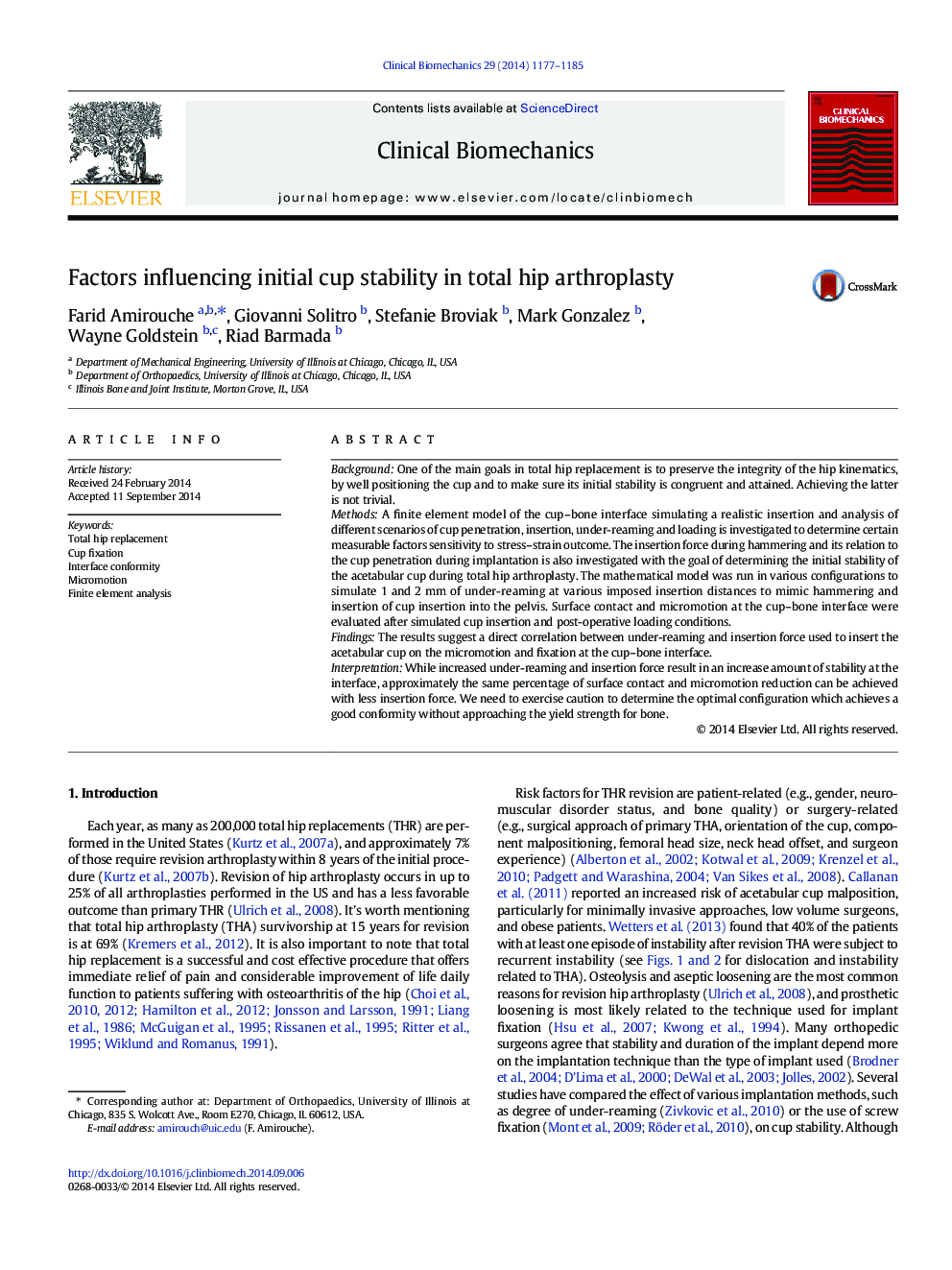| Article ID | Journal | Published Year | Pages | File Type |
|---|---|---|---|---|
| 6204777 | Clinical Biomechanics | 2014 | 9 Pages |
â¢Insertion force and its relation to under-reaming play an important role in THA.â¢For 1 and 2 mm under-reaming the cup maintained a stable fixation during loading.â¢Increase in under-reaming results in higher stresses, especially at the interface.â¢Under-reaming by 2 mm requires an impact force that is 22.5% greater than 1 mm.â¢Micromotion is only reduced by 13% when under-reaming by 2 mm compared to 1 mm.
BackgroundOne of the main goals in total hip replacement is to preserve the integrity of the hip kinematics, by well positioning the cup and to make sure its initial stability is congruent and attained. Achieving the latter is not trivial.MethodsA finite element model of the cup-bone interface simulating a realistic insertion and analysis of different scenarios of cup penetration, insertion, under-reaming and loading is investigated to determine certain measurable factors sensitivity to stress-strain outcome. The insertion force during hammering and its relation to the cup penetration during implantation is also investigated with the goal of determining the initial stability of the acetabular cup during total hip arthroplasty. The mathematical model was run in various configurations to simulate 1 and 2Â mm of under-reaming at various imposed insertion distances to mimic hammering and insertion of cup insertion into the pelvis. Surface contact and micromotion at the cup-bone interface were evaluated after simulated cup insertion and post-operative loading conditions.FindingsThe results suggest a direct correlation between under-reaming and insertion force used to insert the acetabular cup on the micromotion and fixation at the cup-bone interface.InterpretationWhile increased under-reaming and insertion force result in an increase amount of stability at the interface, approximately the same percentage of surface contact and micromotion reduction can be achieved with less insertion force. We need to exercise caution to determine the optimal configuration which achieves a good conformity without approaching the yield strength for bone.
